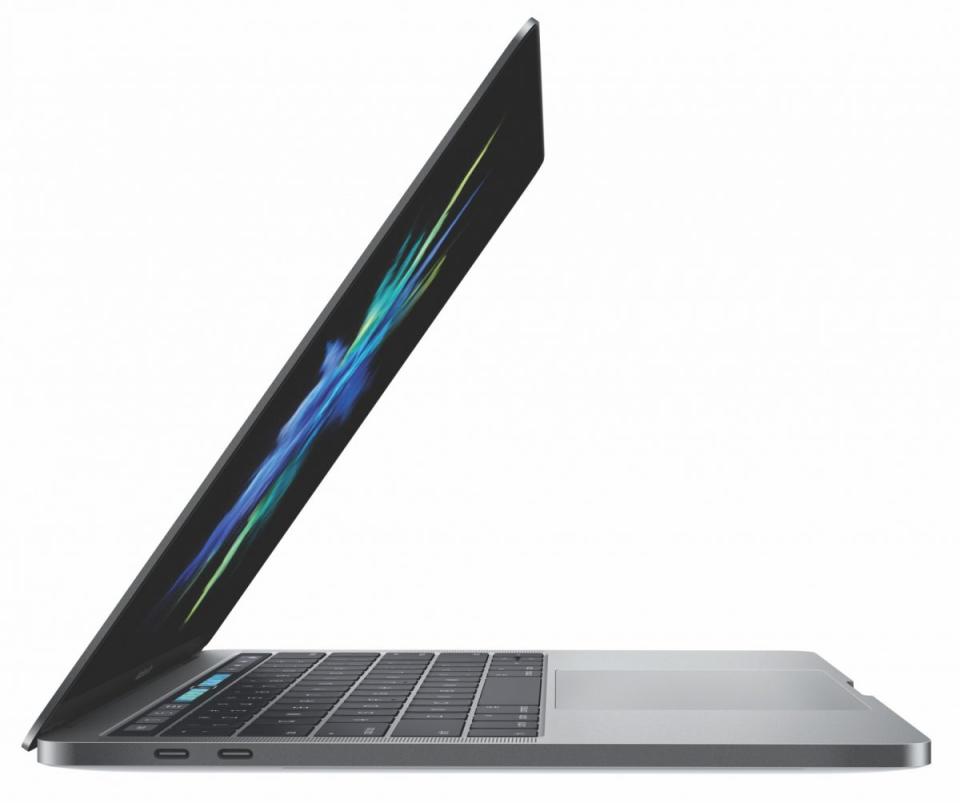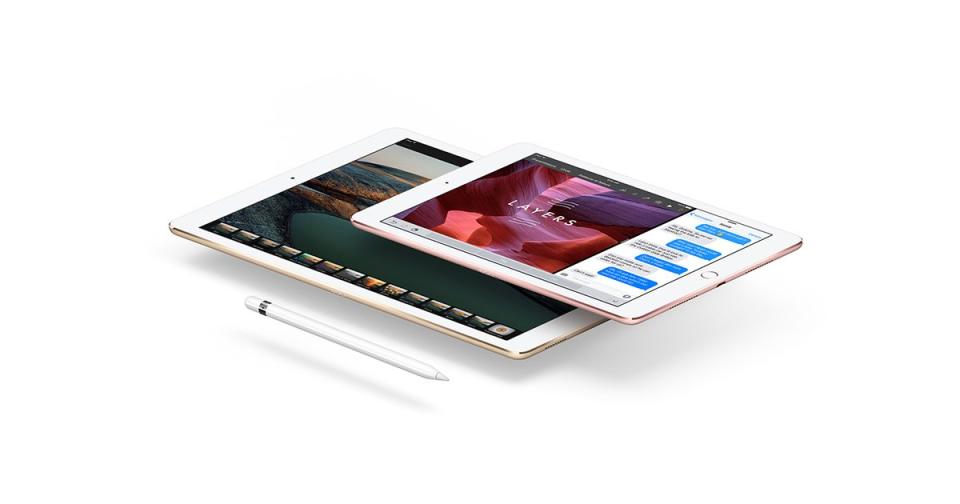5 ways Apple can get back in the game in 2017
If there’s one word critics might use to describe how Apple (AAPL) performed this year, it’s “disappointing.”
You’d be hard-pressed to locate consumers who found Apple products as “magical” this year as in years past. Sure, the tech giant still had a lot to crow about. Its stock has climbed nearly 9% year-to-date, and early iPhone 7 sales smashed records, helped in part by Samsung’s explosion-prone Galaxy Note 7. But despite some welcome improvements, like better cameras and dual speakers, the iPhone 7 proved more evolutionary than revolutionary, with an industrial design that looked largely the same.
Several of Apple’s other big products also failed to “wow” this year. The Apple Watch Series 2 can take a dip in the pool but still needs a cellphone connection to run much of the time. The MacBook Pro swaps out the row of old-school function keys for a thin OLED display called the Touch Bar, but in Apple’s never-ending quest for thinness, the all-new notebook trades hours of battery life for svelteness. (That’s a shame, given Apple’s notebooks until recently were notable for stellar battery life.) Apple, meanwhile, failed to update the entire iMac line.
But between the iPhone 8 — or whatever Apple plans on calling it — on the horizon and a new US president who says he’s intent on spurring domestic growth, things are looking up for Apple in the months ahead.
Here are 5 ways for Apple to correct its course in 2017:
Make the iPhone 8 truly ‘magical’
The iPhone 7 proved to be another bestselling product for Apple, but it was a safe bet design-wise — a move many speculate Apple made because it plans to pull out all the stops for next year’s iPhone 8.
The year 2017 will mark a decade since the original iPhone came out, and many analysts predict the smartphone will see an impressive redesign, with an all-new look, the use of sharper, more colorful OLED displays — at least in select models such as the iPhone 8 Plus — wireless charging, much faster processors, and more built-in memory.
In late 2015 and early 2016, the company acquired Faceshift, which specializes in 3-D motion capture for images, and Emotient, a company that develops technology that analyzes facial expressions to determine a person’s emotional state. It’s unclear at this time just how exactly Apple plans on using those technologies in its products, but at the very least, imagine an iPhone that quickly scans your face to unlock, or even recognizes hand and finger gestures to get around or do simple tasks.
Because of all of these improvements, well-known Apple analyst Gene Munster — who’s leaving Piper Jaffray to start his own venture capital firm — predicts Apple’s next iPhone will be “compelling enough” to see blowout sales of 170 million units during Apple’s 2018 fiscal year.

Slash those MacBook Pro prices, and give us new iMacs
As my colleague David Pogue concluded in his MacBook Pro review this November, the MacBook Pro with Touch Bar by and large is a welcome update to Apple’s longstanding line of notebook computers. But at $1,800, to start, it doesn’t come cheap.
KGI Securities analyst Ming-Chi Kuo expects Apple to cut those prices during the second half of 2017, when Apple releases updated MacBook Pros with newer components inside. Kuo notes that historically, Apple tends to overprice its notebooks at the start of a new MacBook generation before gradually lowering prices the following years, evidenced when the company slashed prices on its MacBook Air products, for example, in 2013 and 2014.
Apple would benefit from finally releasing some major updates for its desktop computers. As my colleague Rob Pegoraro pointed out, the iMacs haven’t received a refresh — and a minor refresh at that — since October 2015. And the Mac mini and Mac Pro have languished even longer, with updates not seen since October 2014 and December 2013, respectively.
Apple CEO Tim Cook recognizes that. The chief executive recently addressed the issue head-on in an employee message board, according to a TechCrunch report this week.
“Some folks in the media have raised the question about whether we’re committed to desktops,” Cook wrote. “If there’s any doubt about that with our teams, let me be very clear: we have great desktops in our roadmap. Nobody should worry about that.”
Neither, it seems, should critics or consumers.
Watch out for 500 million iOS installations
Citi Research analyst Jim Suva estimates the number of devices with Apple’s mobile operating system, iOS, installed on it will cross the 500 million benchmark around the same time the iPhone 8 launches. That’s up from 300 million people having iOS on their mobile devices when the iPhone 6 launched in September 2015.
iOS 10, in particular, continues to rapidly grow, largely driven by a slew of new features like a lock screen that instantly shows more information and a Messages app with virtual stickers and other message effects.
Just one month after it was released, iOS 10 had been adopted by 60% of all eligible devices, outpacing adoption of its predecessors.

Gain more ground in the enterprise
Although overall tablet sales continue to drop — and iPad sales have generally slowed — businesses are buying tablets like Apple’s iPad for employees to use in the workplace more and more. According to Gartner, a Stamford, Connecticut-based research firm, tablet spending in the enterprise will grow from 2015 through 2019 at a 2.2% compound annual growth rate (CAGR) to $8 billion as businesses continue to expand their operations beyond desktop onto mobile.
Apple, for its part, has forged partnerships with companies including SAP (SAP), CISCO (CSCO) and IBM (IBM). This September, for example, Apple announced a wide-ranging partnership with Deloitte. In addition to already having the consulting firm’s employees use 75 custom apps across 100,000 iOS devices, the two companies announced a new service called Enterprise Next, which helps educate Deloitte clients to take advantage of the iOS ecosystem of hardware, software and services in their workplace.
Analysts like Suva expect iPad and iPhone adoption to grow further in 2017 as businesses expand their business operations on the mobile front.
Take advantage of the new administration
To say President-elect Donald Trump and Apple have not seen eye-to-eye would be putting it mildly. During Trump’s campaign, the billionaire businessman criticized Apple for not manufacturing more of its products in the US and even suggested a boycott of Apple products if the company didn’t reverse its staunch pro-encryption stance. Cook, for his part, has said a “debate of ideas” is very important, even if that debate leads to disagreement. That’s likely why the chief executive attended Trump’s tech summit at Trump Tower in Manhattan earlier this month.
But Apple could very well benefit from the Trump administration. The president-elect has proposed slashing the corporate tax rate from 35% today to 15% to help spur domestic growth. He also wants to give companies such as Apple, which has over $200 billion held abroad, a one-time opportunity to pay a mere 10% tax to bring home roughly $2.5 trillion stashed overseas.
“We see Apple as a significant beneficiary of Trump tax reforms,” Suva wrote in a report this December. “Apple is very well-positioned to benefit from potential tax reform of either or both a repatriation tax holiday and or a lower corporate tax rate.”
The Citi Research analyst calculates a reduction in US tax rate would drive 6% benefit to Apple’s earnings-per-share (EPS), while a cash repatriation holiday and share buyback could drive an incremental 10% EPS benefit.
“AAPL probably won’t appreciate over the next 12 years as it has over the past 12, but we still believe the company can recreate that magical feeling with some future product and will enjoy watching the stock rise when they do,” Munster concludes at the end of his report.
Munster’s very bullish final take on Apple holds a lot of truth. An “off” year for Apple would be considered an excellent year for many other companies. And while it’s obvious Apple has yet to find its “next big thing” in areas like artificial intelligence or cars, 2017 could very well be the year Apple impresses consumers with innovative products and services once again.
__
JP Mangalindan is a senior correspondent for Yahoo Finance covering the intersection of tech and business. Follow him on Twitter or Facebook.
More from JP Mangalindan:
Jeff Bezos: Trump tech summit was ‘very productive’
Trump to tech titans: ‘Everybody in this room has to like me a little bit’
Amazon CEO Jeff Bezos will attend Trump’s tech summit
Trump victory bursts Silicon Valley bubble
Why Trump might not be a disaster for tech
Obama’s chief tech boss explains the shortage of women in tech

 Yahoo Finance
Yahoo Finance 
